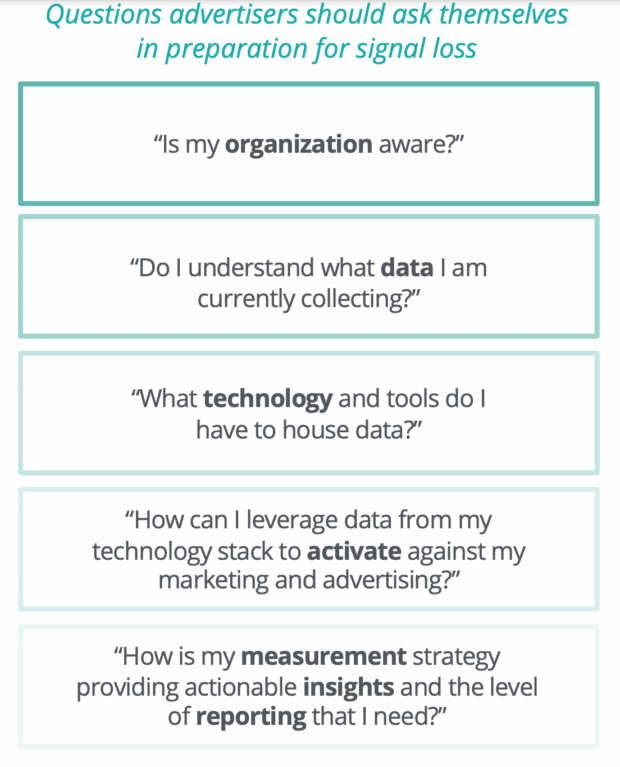Meta has released a guide to help brands adjust their advertising strategies in response to Apple’s App Tracking Transparency (ATT) update. The update allows iOS users to opt out of data tracking across 3rd-party applications.
Launched on April 26th, 2021, the ATT update has had a direct impact on Meta’s ability to use user data to serve targeted ads on Facebook, Instagram, and WhatsApp.
In response, Meta commissioned its 2022 Signal Resiliency Guide. “Signal resiliency” is Meta’s way of saying “how to target your ads with less data collected from 3rd party apps”. The guide will help social media marketers adjust their strategies for this brave new world of online data privacy.
The data that Meta uses to determine who, when, and where users are engaging with advertisers has become much more limited.
Specifically, the following digital marketing tactics are “at risk”, according to Meta’s guide:
- Cross-Site Tracking
- Targeting & Retargeting
- Lookalike Modelling
- Measurement & Attribution
- Frequency Control
- Website & Email Personalization
- Ad Platform Optimization

The guide suggests shifting advertising focus to organic search and enriching 1st-party data. These are the best ways to mitigate the business impact as access to user data becomes more and more limited in the years to come.
Fortunately, Meta provides several strategies for marketers to adopt. Also included are critical questions that marketers need to ask to determine how to adjust their digital marketing strategies.

The strategies outlined by Meta include:
- Overhauling your measurement strategy.
Chances are your current analytics/measurement strategy relies on data that will no longer be available. If these data gaps are not addressed advertisers will lack the holistic view of their audience that has made advertising on Meta so effective.
- Implementing test-and-learn measurement to fill the data gaps.
Creating the most effective ads is going to take a lot more manual labor, so it’s time to double down on performance testing and analysis.
Use the data you currently have to identify what makes your high-performing ads successful. The better understanding you have now, the less trial and error it will take to optimize your content later (when a huge portion of your audience data is no longer available).
- Offering value in exchange for consumer data.
Offer users an incentive to share their data by providing a list of benefits that sharing their data can provide. Users can be far more receptive to sharing their data if they see it as an exchange for better service or an improved user experience.
- Utilizing Privacy-Enhancing Technologies (PETs).
To stay compliant today and in the future, incorporate PETs into your technology stack. Look into providers of homomorphic encryption, secure multi-party computation, distributed ledger technology, or any other privacy-enhancing tech that is relevant.
The digital marketing landscape is rapidly changing and becoming a far more private space. Marketers need to start making changes to their existing strategies now because the tactics that work today simply won’t be available in the near future.
The entire 35-page Signal Resiliency guide is a must-read for all digital marketers, even if Meta is not a major component in your current marketing strategies.
Learn more about data privacy and social media:
Continue the conversation on Reddit
Comments 0